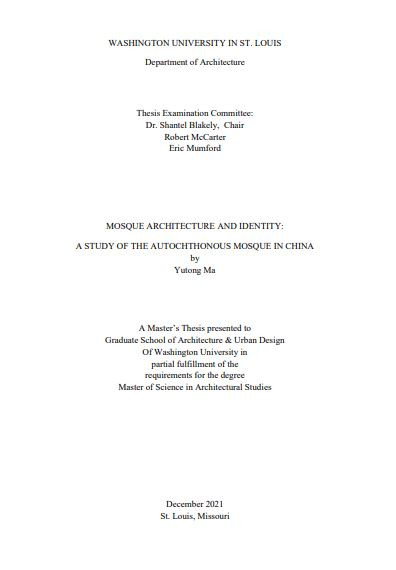
This thesis argues that an autochthonous mosque architecture exists in China, and this historical type adequately serves as a reference for contemporary mosque building in southeastern China in light of how it responded to the Chinese cultural and urban contexts. Many Hui Muslims and architects in this region refuse to consider historical mosque architecture built in traditional Chinese architectural style as their cultural references in constructing new mosques, as they believe that the traditional Chinese architectural language is insufficient to express their identity as Muslims. Instead, they prefer a collection of symbolic architectural elements to be used in mosque architecture loosely termed as the “Arabic” style. In response to this misconception, I argue that a Chinese type of mosque architecture, exemplified by the Great Mosque of Xi’an, has formed as early as in the late 15th century; it is rooted in the historical process in which a unique Chinese Muslim identity – Hui – was formed. It is this Chinese type of mosque architecture, not the imagined set of exotic “Arabic” mosque style, which manifests the cultural identity of Hui Muslims in southeastern China.
Ma, Yutong, ‘Mosque Architecture And Identity: A Study Of The Autochthonous Mosque In China’ (Unpublished Master Thesis: Washington University, 2021).
I agree to the terms outlined below:
You agree to upload and assign Mosqpedia Database the rights to use the content worldwide and in perpetuity across all current and future media platforms. Mosqpedia Database may edit, copy, adapt and translate your contribution.
The content will be distributed under the Creative Commons Attribution-Deed – Attribution-NonCommercial-NoDerivatives 4.0 International – Creative Commons
All data will be stored in line with data protection regulations.